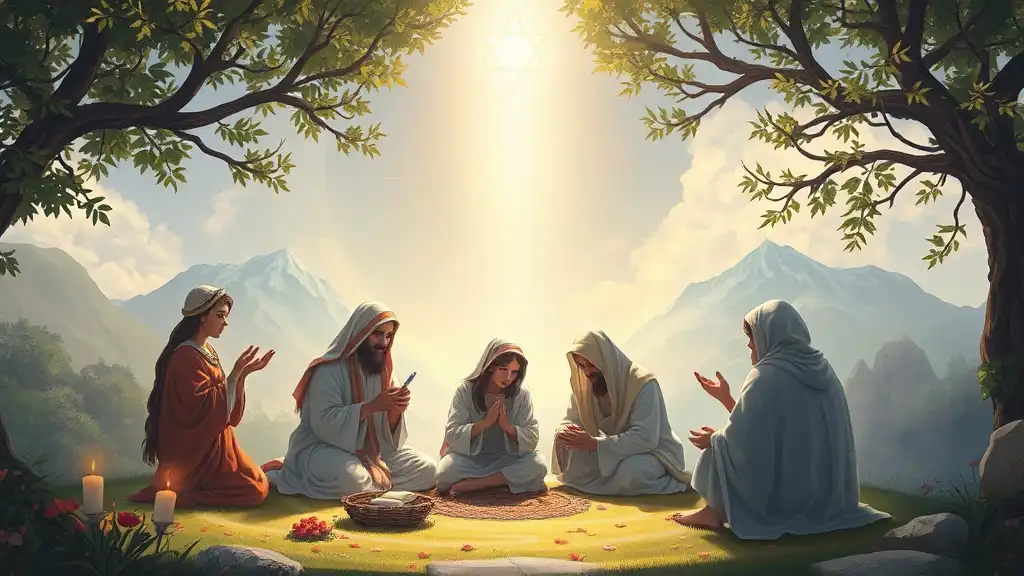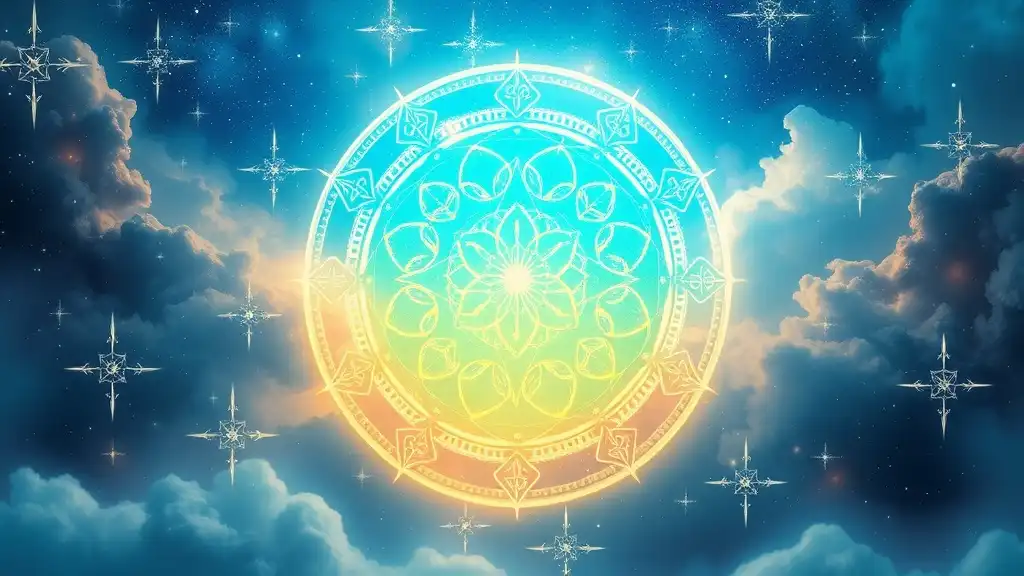The significance of shapes in spiritual practices is profound, and among these shapes, the circle stands out as a powerful symbol. Revered across cultures and traditions, the circle embodies multiple spiritual meanings that resonate deeply with the human experience.
The Symbolism of the Circle
Wholeness and Unity
At its core, the circle represents wholeness in every sense of the word. Unlike other shapes with angles and edges, the circle has no beginning and no end, signifying completeness. This concept of wholeness extends to aspects of the self, relationships, and community, emphasizing the idea that we are all interconnected parts of a larger whole.
In spiritual contexts, this unity conveys a profound message: that separation is an illusion. The circle invites us to embrace the feeling that we are part of something greater than ourselves—a cosmic tapestry woven with the threads of all existence.
Eternity and Infinity
The circular nature of the symbol also embodies eternity and infinity. Imagine time as a continuous loop rather than a linear progression; this perspective allows us to reflect on the cyclical nature of existence. Many ancient cultures identified time with circularity, believing in recurring themes of life, death, and rebirth.
Various spiritual traditions communicate the interpretation of eternity through circles. From the endless cycle of seasons to the perpetual motion of the cosmos, the circle serves as a reminder that life is a series of cycles—an infinite dance that transcends time.
Cycles of Life
Life itself can be viewed as a circle, demonstrating various natural rhythms—birth leading to growth, growth to decay, and decay to rebirth. This circle of life illustrates how all beings undergo similar journeys, reflecting the interconnectedness inherent in existence.
Understanding these cycles adds depth to our spirituality, encouraging acceptance of change and reminding us that every end is merely a new beginning. Embracing the circle of life helps us find peace in transitions, as we recognize the beauty that lies in both the phases of life and our experiences within them.

Circles in Various Spiritual Traditions
Indigenous Cultures
The circle holds significant meaning in many Indigenous cultures. In Native American spirituality, circles often represent community and the sacred connection between people and nature. Ceremonies conducted in a circular formation foster a sense of equality and shared purpose, reinforcing the importance of collective spirit.
The circle symbolizes the sacredness of the Earth and our responsibility to honor and protect it. By gathering in circles, communities not only enhance their spiritual practices but also strengthen bonds that reverberate through generations.
Eastern Philosophies
In Eastern philosophies, circles convey profound wisdom. In Buddhism, for instance, mandalas—circular diagrams used in meditation—represent the universe, symbolizing the journey towards enlightenment. Each layer of the mandala reflects a stage of spiritual development, guiding practitioners towards a deeper understanding of self and existence.
Similarly, in Hinduism, the cyclical nature of time is illustrated through the concept of Samsara, the endless cycle of birth, death, and rebirth. The circle serves as a visual and conceptual reminder that one's actions in this life will reverberate into future lives, advocating a mindful existence that aligns with spiritual evolution.
Western Mysticism
In Western mysticism, the circle holds a divine significance. It often symbolizes the cosmos itself—the structure that connects all things. Many ancient texts, such as those from the Hermetic tradition, observe the circle as a representation of the divine order, suggesting that everything flows from a singular source.
Esoteric practices frequently incorporate circles to create space for spiritual work. Through rituals involving candles or symbols arranged in a circular pattern, practitioners create sacred spaces where they can access higher consciousness and invite divine presence.

The Circle in Nature and Its Spiritual Connection
Sacred Geometry
The study of sacred geometry reveals that the circle is a fundamental shape found throughout nature. From the roundness of the sun and moon to the cyclical patterns of the seasons and even the orbits of planets, circles appear everywhere.
Recognizing this pattern deepens our understanding of the interconnectedness of all life. By contemplating sacred geometry, we unveil the divine blueprint of existence, reinforcing the idea that spirituality is woven into the fabric of the world around us.
Nature’s Cycles
Nature exemplifies circles in numerous ways, reflecting profound spiritual lessons. The cyclical changes of seasons serve as powerful reminders of the impermanence of life. For instance, the transition from vibrant spring to fading autumn mirrors our own life's phases, teaching us to appreciate beauty while understanding that change is inevitable.
Observing these natural cycles nurtures a sense of grounding and connection to the Earth. It's an invitation to align our own lives with these rhythms, fostering a holistic way of living that honors the cycles within and around us.

Meditative Practices Involving Circles
Circle Meditation
Circle meditation is a practice that exemplifies the powerful energy of circles in spirituality. In these meditative sessions, participants gather in a circle to engage in mindfulness, breathwork, or guided visualization. This communal practice creates a sense of shared energy and amplifies individual intentions, integrating the personal with the collective.
Incorporating circle meditation into your spiritual practice can lead to deep introspection and healing, allowing you to tap into the unified energy of the group, strengthening your connection to self and others.
Group Ceremonies and Circles
Circles play a crucial role in group ceremonies, embodying unity and community spirit. Whether it's a drum circle, a prayer circle, or a gathering for collective healing, these rituals provide a platform for participants to share their intentions, experiences, and struggles.
Through the act of forming a circle, participants break down barriers and foster inclusivity, creating a sacred space where everyone is honored. This organization promotes the idea that we are all part of a greater whole, further amplifying the lesson of cooperation that circles inherently embody.

Conclusion
The spiritual meanings associated with the circle are vast and varied. From wholeness, unity, and eternity to the natural cycles of life, the circle consistently invites us to reflect on our interconnectedness and the deeper truths of existence. By embracing the circle in our spiritual practices—whether through meditations, ceremonies, or an appreciation of nature—we nurture a profound sense of belonging and purpose.
As you embark on your spiritual journey, consider how circles manifest in your life. Engage in the practice of recognizing these signs, and allow the symbolism of the circle to guide you toward a more profound understanding of yourself and the world around you.

Further Reading and Resources
To expand your knowledge on the spiritual significance of circles, consider exploring books on sacred geometry and Indigenous practices, seeking articles on meditation and mindfulness, or participating in local group ceremonies that honor the circle's transformative power. Engage with resources that resonate with you, and allow your exploration of circles to deepen your spiritual journey.



















